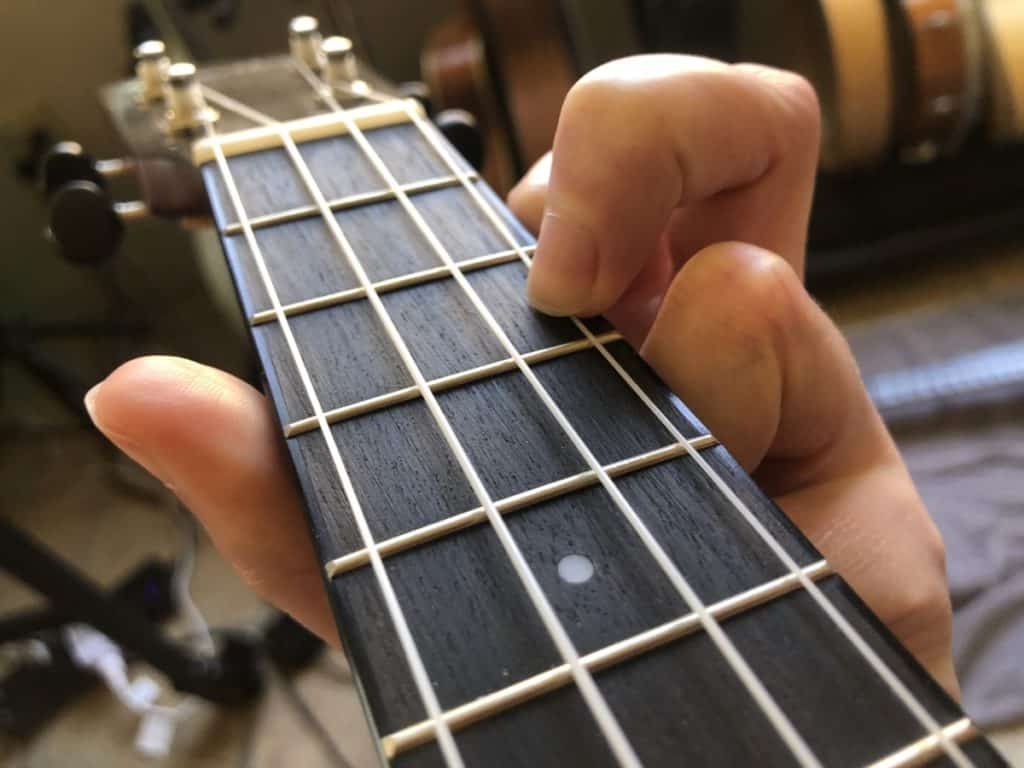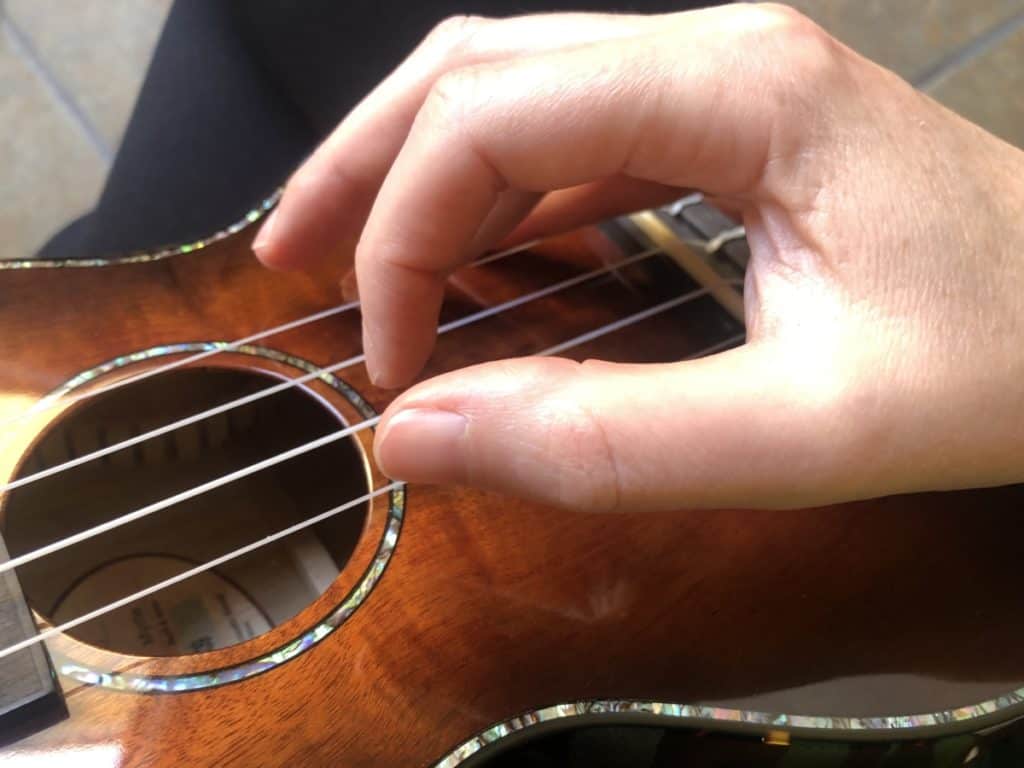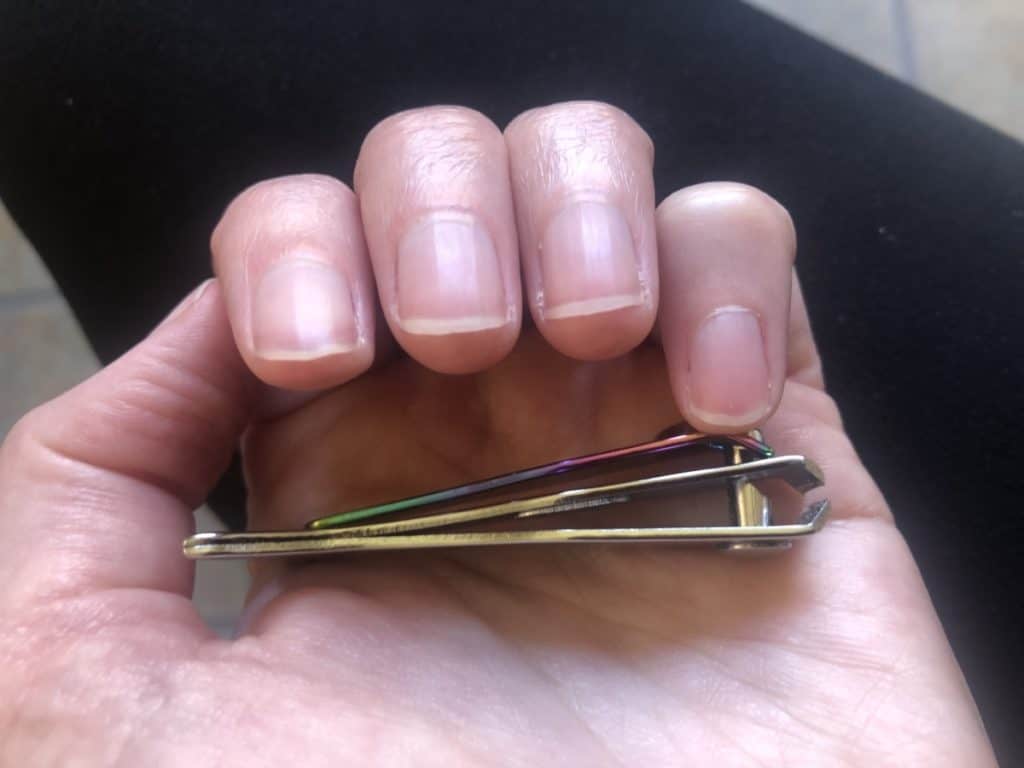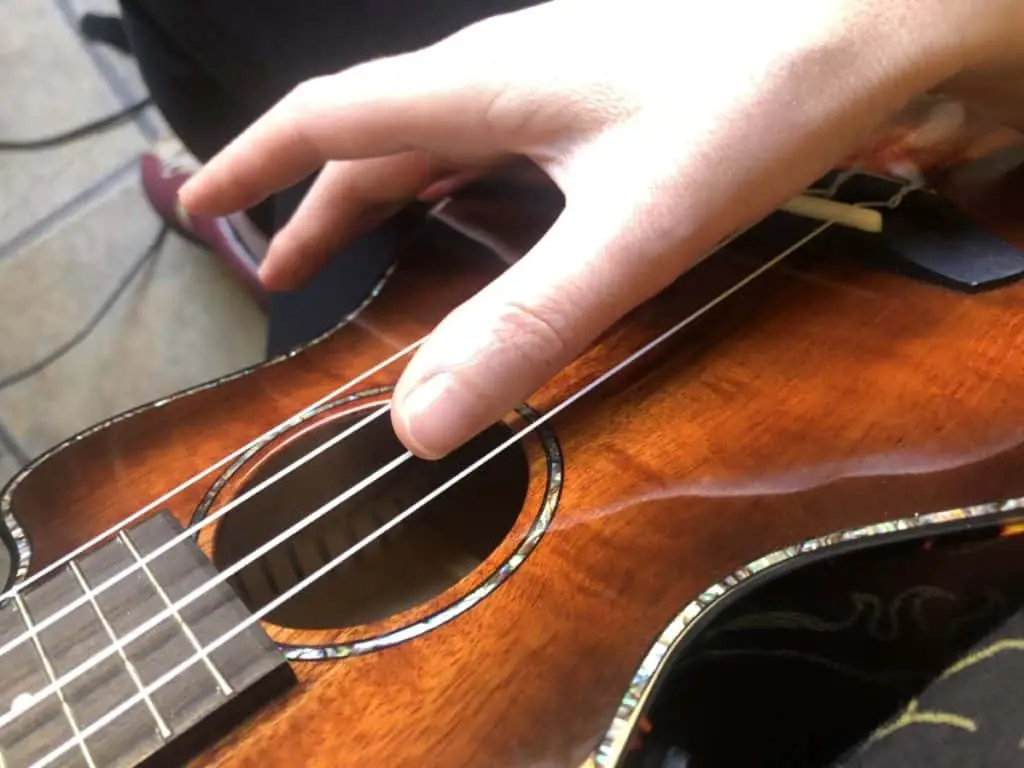Today I’m going to explain how playing ukulele with long fingernails, both natural and acrylic, can be both good and bad.
Personally, I play the ukulele with fingernails as short as possible because I can’t stand the hassle of having long nails. I’m living proof that playing with short fingernails is possible!
That said, long nails can come in handy for both strumming and fingerpicking – but only on the strumming hand!
I’ll start off by answering these two common questions about playing with long nails.
Can You Play Ukulele with Long (Natural) Nails?
You can play ukulele with long natural nails on your strumming hand but not on your fretting hand. Long nails on the strumming hand create a louder, brighter, and more articulate sound and are ideal for fingerpicking. Long nails on the fretting hand make accurately playing notes and chords nearly impossible.
Can You Play Ukulele with Long (Acrylic/Fake) Nails?
This is similar to natural nails, but let me give you the quick summary anyway:
You can play ukulele with long acrylic or fake nails on your strumming hand but not on your fretting hand. High quality, durable long acrylic nails on the strumming hand create a louder, brighter, and more articulate sound. Long acrylic nails on the fretting hand makes accurately playing notes nearly impossible.
I know that’s a lot of information right off the bat, but keep reading and I’ll explain the nuances of fingernails and ukulele playing in more depth.
Let’s dive right into nailing down the pros and cons of different fingernail lengths and materials.
Do You NEED Long Nails to Play Ukulele?
You most certainly do not need long nails to play the ukulele. In fact, long nails quickly become a detriment on the fretting hand.
Long Nails on the Fretting Hand
The shorter you can keep your fretting hand fingernails the better.
The fingers of the fretting hand have to push straight down on the strings to create notes and chords. This is best accomplished with the pads of the fingers, as it allows for more control and makes it possible to apply the correct amount of pressure to produce the desired note.

Unless you’re Dolly Parton herself, long fingernails make it nearly impossible to place the fingers on the strings to fret notes and chords.
Long nails hold the finger pads up and away from the string and prevent optimal finger pad contact. To make contact, your fingers will have to come in at an angle, which causes them to collide with the other strings and create unwanted muting and off sounds.
This video by Mark’s Ukulele Tips illustrates this point:
It is especially difficult to fret the first string with long nails because you have to avoid contacting three other strings which are very close together on the small ukulele neck. You may be able to play a fourth string single note chord like A minor but that’s about it!
To make matters worse, trying to fret with talons can also permanently damage your fretboard.
Long Nails on the Strumming Hand
Long nails on the strumming hand, however, can be beneficial to your playing. As with so many things concerning ukuleles, a lot of it comes down to personal preference.
Most players strum primarily with their index finger, but some use the ring, middle, and thumb as well. Nails can be grown long on all fingers of the strumming hand or just the few you use most.

When strumming, the fingernails contact the strings on the down strum, and the fleshy finger pads contact the strings on the up strum. This results in a differential in sound qualities (“LOUD, soft, LOUD, soft”) and creates the characteristic rhythm of the ukulele.
Having long nails on the strumming hand further emphasizes this difference in volume and tone between the down and up strums and many players love this.
Long nails are especially helpful (and some would argue essential) for playing fingerpicking style. Individual strings can be more accurately plucked to create complicated rolls and patterns. This is the same idea behind classical guitarists using long nails and three-finger banjoists using metal finger picks.
Generally speaking, long nails produce a louder and brighter sound when strumming while short nails are a little quieter and more on the mellow side. It’s up to you which one you prefer – and if you are willing to deal with the hassle of having long fingernails on only one hand!
How Professionals Use Long Nails
Many professionals consider long nails on the strumming hand a strong asset.
Strumming the strings with long fingernails produces a loud, robust sound with a sharper, brighter, and more articulate tone. Long nails also give the player greater control over the strings in what is known as attack.
Long nails are especially necessary for precision and power during fingerstyle playing, where individual strings must be loudly and quickly plucked in complicated patterns.
Most professional fingerstyle players sport pretty serious nails on their thumb, index, middle, and ring fingers for this reason, much like classical guitarists. The pinky fingernail is usually kept short, allowing it to plant on the ukulele’s body for stability while picking.
The incredible Hawaiian ukulele player Taimaine demonstrates a few tricks you can do with long nails in this video:
Ukulele pros who play very fast styles, like flamenco, also file their long fingernails to have rounded edges so they can roll off the strings – essentially becoming human picks.
Professionals are often willing to commit to a rigorous care regime to maintain their long nails, and some even regularly visit salons to maintain their playing nails or get acrylic nails applied.
Overall, most professionals prefer the tone of natural nails to the harsh, dead sound of thick acrylic nails. But again, this is a matter of personal taste. It is also possible to have acrylic nails fitted and filed by an expert manicurist to achieve a preferred tone.
How Long Your Nails Should Be to Play Ukulele (Ideal Size)
While you will encounter a lot of range on fingernail length among uke players and plenty of different opinions, most would agree that the best length for the strumming hand fingernails is just long enough.
The fingernails of the strumming hand should extend just slightly past the fingertips – about 1 to 1.5 millimeters, or, around 1/16th of an inch. Some players keep their thumbnail slightly longer than the others.
The goal is to be able to strike the strings with your nails rather than the flesh of your fingers. Aim to keep your nails just long enough to make this happen. File and shape nails regularly to maintain them at their optimal length.
The nails of the fretting hand, however, should be kept as short as possible so the skin contacts the strings first.
If you can’t stand having longer nails, that is perfectly okay. You’ll still be able to strum and pluck your ukulele! In fact, many people prefer the softer and mellower sound this produces.
Maintaining Long Natural Nails
When fingernails are too long, you run the risk of breaking them in daily life. Long nails also require significant maintenance that most people aren’t willing to put in.
And remember: the nails will only be long on one hand. Most people aren’t cut out for this lop-sided existence, aside from professional musicians.
That said, it’s fairly easy to grow out your natural nails to give the experience a try. Simply stop cutting them and avoid biting them for awhile and see how it goes!

If you have a difficult time growing long, healthy nails or your nails break easily, consider supplementing with omega 3 or biotin or increasing your consumption of gelatin. You may want to ask your doctor before trying supplements like that though (I’m not a doctor).
Also, you could try clear nail varnish or nail strengthener, but avoid thick nail polish, as this deadens the tone when you play.
Getting Acrylic Nails
Some people just can’t grow and keep long natural nails. Acrylic nails are a more durable option – and can be replaced in a day if needed. They also create a more even tone, as natural nails vary in texture.
If you choose to apply acrylic nails to some or all of your strumming hand’s fingers, it is always best to get them done at a nail salon to ensure that they are high quality and properly fitted.
Cheaper at-home false nails typically aren’t strong enough to withstand the force of playing. They are also often made of thick plastic that does not sound good striking against the strings.
Can You Strum a Ukulele with Your Thumb?
Strumming the ukulele with your thumb is also an option and may be preferable as it offers the potential for different rhythms and tones.
When you strum with your thumb, the soft finger pad strikes the strings on the downbeat and the hard thumbnail strikes the strings on the upbeat.

This is the opposite pattern from the normal strum, where the nail strikes the strings on the downbeat and the flesh of the finger pad strikes the strings on the upbeat.
The resulting sound is a “soft, LOUD, soft, LOUD” pattern that works great for playing ska, reggae, and jazz styles. The tone produced is also warmer and mellower due to the large pad of the thumb.
There are virtually infinite strumming styles for the ukulele and it’s perfectly fine to experiment with different configurations – or even come up with your own!